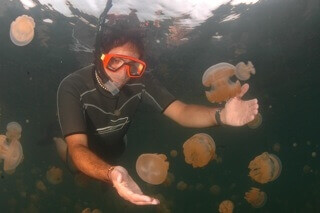Emily HalnonGHTC
Emily Halnon is a communications associate at GHTC.

Dr. Alex Dehgan is the science and technology adviser to the administrator of the US Agency for International Development (USAID), where he helps employ science, technology, and creativity to help solve traditional and persistent development challenges. Previously, he worked in the Department of State on science diplomacy issues with the Muslim world, including Iraq, Afghanistan, and Pakistan. He talked with GHTC’s Breakthroughs blog on a number of issues, including a NASA-USAID innovation for remote areas and the promise of several products in the pipeline that could save many lives.
Q: During USAID’s 50th year, there’s a lot of talk about helping women in the developing world. How are you doing this with scientific research?
A: Microbicide research is a good example. It would empower women to protect themselves against HIV. In areas where there are economic disparities, where the relationship involves older men and younger and poorer women, and men refuse to use condoms, a microbicide might be the only way for a woman to protect herself.
Another example is research and development with mobile phones. It helps women capitalize on the benefits of microfinance. It allows children to have access to educational materials. It allows for easy cash dispersal.
And in health care situations in remote locations, NASA and USAID have an incubator program called LAUNCH. One of the innovations is essentially a lab-in-a-box, a handheld device that takes a drop of blood and analyzes it for quick diagnosis of a variety of diseases. This could have exceptional uses, including for regular checkups for women who are pregnant.
Q: You’ve just had a large gathering in Washington, DC, of researchers at the Saving Lives at Birth event, part of USAID’s Grand Challenges initiative. Why was this important to you?
A: We focused on three constraints: How to improve the capacity of caregiver, how to deliver new tools, and how to ensure demand generation by women. What we need to do now is provide women in remote settings with new tools. For instance, we’ve now have these simulation models that allow health care workers to simulate doing a C-section surgery. That kind of innovation is very important.
Q: So what innovation jumped out at you at this gathering?
A: One that caught my attention was a nominee from Australia on stopping post-partum bleeding, which is a major cause of death after childbirth. Now, there’s a drug that stops the bleeding, but you need cold chain – refrigeration – which can be difficult in remote areas. What the inventor did was turn the drug into an aerosol, which doesn’t need refrigeration. It’s a great example of how we use innovation to create easier ways to get the products people need out in the communities.
Q: What about challenges in research? What happens after you get unexpected results from a trial?
A: Microbicides is a good example. It’s one of the challenges that exist and it involves a great deal of trial and error research. It requires incremental knowledge, and it requires building upon the failures of other people, so that we can get to a product that works.
We all tend to celebrate breakthroughs, but we don’t often look at how many combinations we had to try in order to get to the point itself. You have to try a variety of combinations. We are frequently expecting results very quickly and come up with answers on timelines, but it doesn’t always work out that way. That said, we need to recognize that failure is actually an opportunity to learn and move forward; we need to not be afraid to take risks.